
Matteo Carcassi was an Italian guitarist and composer.
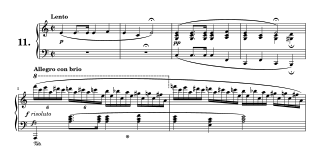
An étude or study is an instrumental musical composition, usually short, designed to provide practice material for perfecting a particular musical skill. The tradition of writing études emerged in the early 19th century with the rapidly growing popularity of the piano. Of the vast number of études from that era some are still used as teaching material, and a few, by major composers such as Frédéric Chopin, Franz Liszt and Claude Debussy, achieved a place in today's concert repertory. Études written in the 20th century include those related to traditional ones and those that require wholly unorthodox technique.

Ferdinando Maria Meinrado Francesco Pascale Rosario Carulli was an Italian composer for classical guitar and the author of the influential Méthode complète pour guitare ou lyre, op. 27 (1810), which contains music still used by student guitarists today. He wrote a variety of works for classical guitar, including numerous solo and chamber works and several concertos. He was an extremely prolific writer, composing over 400 works for the instrument.
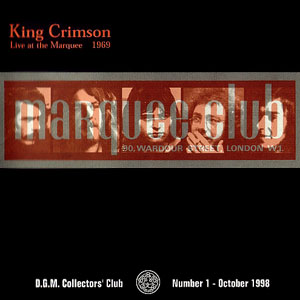
Live at the Marquee is a live album by the band King Crimson, released through the King Crimson Collectors' Club in October 1998.

Johann Friedrich Franz Burgmüller, generally known as Friedrich Burgmuller was a German pianist and composer during the Romantic period. He is perhaps best known for his three collections of children's etudes for the piano, particularly his Op. 100 "25 Études faciles et progressives" for early intermediate students. The other two collections, for more advanced students, were Op. 105 and 109.
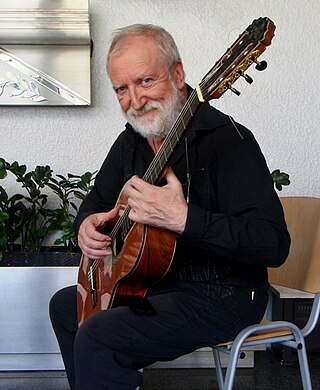
Štěpán Rak is a Czech classical guitarist and composer of Ukrainian origin. He is well known for the technical innovations that he uses in his compositions.
Easley Rutland Blackwood Jr. was an American professor of music, concert pianist, composer, and the author of books on music theory, including his research into the properties of microtonal tunings and traditional harmony.
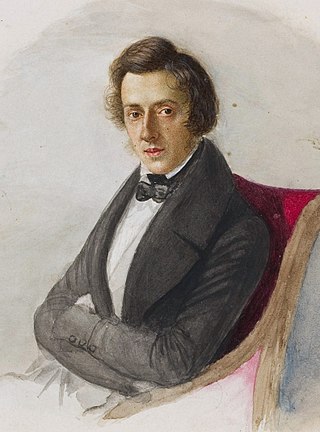
The Études by Frédéric Chopin are three sets of études for the piano published during the 1830s. There are twenty-seven compositions overall, comprising two separate collections of twelve, numbered Op. 10 and Op. 25, and a set of three without opus number.
In music, a method is a kind of textbook for a specified musical instrument or a selected problem of playing a certain instrument.
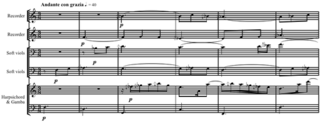
Twelve Microtonal Etudes for Electronic Music Media, Op. 28, is a set of pieces in various microtonal equal temperaments composed and released on LP in 1980 by American composer Easley Blackwood Jr.
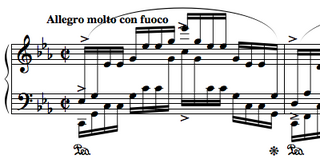
Étude Op. 25, No. 12 in C minor is one of Frédéric Chopin's formal studies for the piano, opus 25, dedicated À Madame la Comtesse d'Agoult. It was first published in 1837 in French, German, and English. In the first French edition, the time signature is 4/4, but most recent editions of this piece follow the manuscript and German editions, which indicate cut time. This work is a series of rising and falling arpeggios in various chord progressions from C minor. It is sometimes nicknamed the "Ocean" étude.

Étude Op. 10, No. 8 in F major is a technical study composed by Frédéric Chopin. This work follows on from No. 7 as being primarily another work concerned with counterpoint. In this case, however, the principal melody is in the left hand, the secondary being embedded in the arpeggios of the right hand. As with many of the études, the work is divided into three sections – bars 1–28, 29–60 and 61–95.
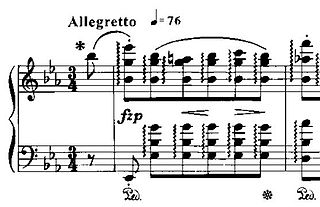
Étude Op. 10, No. 11, in E♭ major, is a technical study composed by Frédéric Chopin. It is sometimes known as the "Arpeggio" or "Guitar" Étude. The chief difficulty addressed in this piece is the performance of extended arpeggiated chords. Throughout, the hands are required to stretch intervals as large as twelfths. The melody, though usually the highest note of each chord, is often found in inner parts with higher parts simply being part of the accompaniment. This is especially the case in the final bars. The piece is also notable for its chromatic harmonies, daring at the time, and enharmonic shifts.
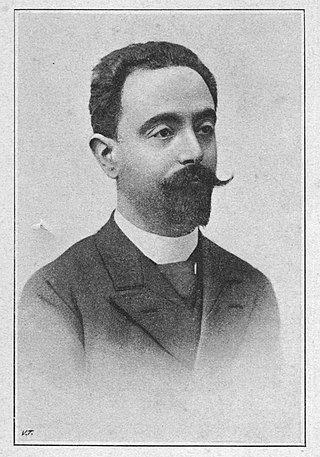
Carlo Munier (1858–1911) was an Italian musician who advocated for the mandolin's acknowledgement among as an instrument of classical music and focused on "raising and ennobling the mandolin and plectrum instruments". He wanted "great masters" to consider the instrument and raise it above the level of "dilettantes and street players" where it had been stuck for centuries. He expected that the mandolin and guitar would be taught in serious orchestral music schools and incorporated into the orchestra. A composer of more than 350 works for the mandolin, he led the mandolin orchestra Reale circolo mandolinisti Regina Margherita named for its patron Margherita of Savoy and gave the queen instruction on the mandolin. As a teacher, he wrote Scuola del mandolino: metodo completo per mandolino, published in 1895.

Anton Bernhard Fürstenau was a German flutist and composer. He was the most famous virtuoso in Germany on his instrument and the most important Romantic flutist of the first half of the nineteenth century. His son Moritz Fürstenau (1824–1889), whom he later sent to study with Theobald Boehm in Munich, was one of his numerous students. Skeptical as to the technical advancements of the flute, he remained faithful to the nine key flute until his death.
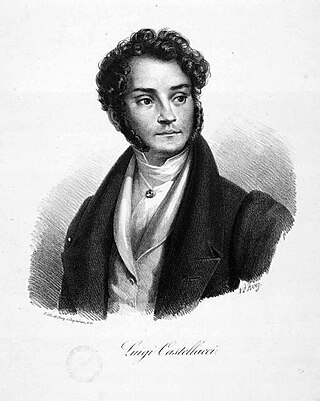
Luigi Castellacci was an Italian virtuoso on the mandolin and guitar, an instrumental composer and the author of popular French romances with guitar and piano accompaniments.
In music, Op. 60 stands for Opus number 60. Compositions that are assigned this number include:
Heitor Villa-Lobos's Étude No. 9, part of his Twelve Études for Guitar, was first published by Max Eschig, Paris, in 1953.













